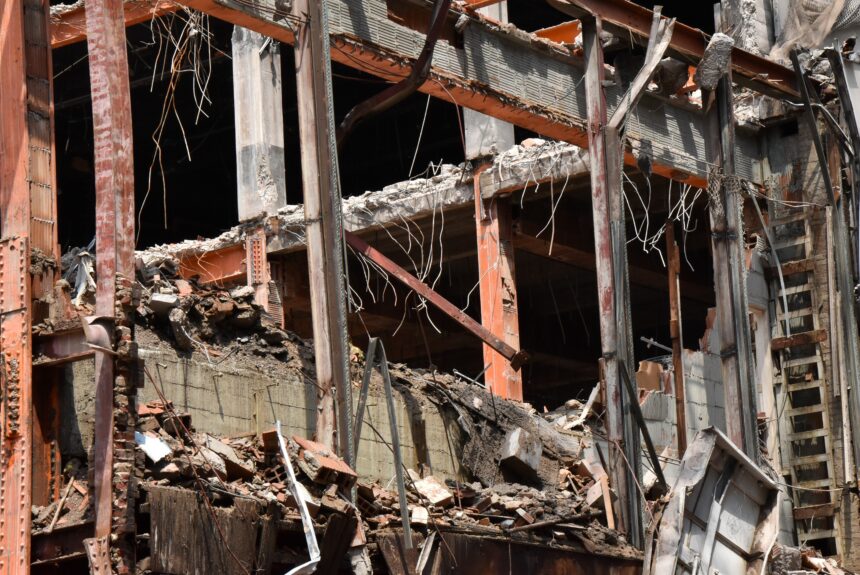Millions of buildings are demolished and built every year. The result is a massive amount of construction waste ranging from bricks, asphalt and concrete to glass, plastics and metals. It has been estimated that over 900 million tonnes of such waste are created within the EU alone. A small proportion of the waste is used as aggregates in roads or building foundations – the remainder generally gets sent to landfill.
>>>READ: Sustainable, Environmentally-Friendly Bioplastics for the Future
Not surprisingly considerable attention is being focused on methods of reusing and recycling construction waste with many innovative solutions appearing.
A test project undertaken at Alkirch in France by Swiss multinational Holcim has resulted in the world’s first clinker made entirely from recycled materials. It has been hailed as a key breakthrough in driving the development of a circular economy within the construction industry. By the end of 2022, Holcim aims to be delivering 100% recycled concrete using only recycled materials – recycled water, recycled cement, recycled clinker and recycled rebar.
Attention has also focused on cement production in Germany where Heidelberg Materials has won awards for its innovative ReConcrete-360° concept. Novel processes are used to crush demolition concrete and separate it into its component materials such as sand, gravel and hardened cement paste. This is reused as a low-carbon material for clinker and cement production replacing natural limestone. An added advantage is that the special cement paste also permanently absorbs and binds CO2, allowing it to act as a carbon sink.
Bricks and stone blocks are essential ingredients for every building. Entrepreneurial Dutch start up, StoneCycling, has developed a way of creating bricks from construction debris such as roof tiles, steel and ceramic blocks. Carefully chosen waste is ground down, and placed into moulds, dried and then fired at a low temperature thus reducing energy requirements. The resultant blocks are produced in a variety of colours including green, oyster, yellow and brown. The company claims that its bricks are 300% stronger than concrete blocks.
Flinders University in Australia has been actively exploring ways of creating greener, more sustainable building materials for some years. In 2020, it announced a breakthrough in the creation of a new rubber polymer revolutionising the production of bricks made from recycled PVC, construction materials and waste plant fibres. The rubber polymer is made from sulphur and canola oil, and compressed before being used to make tubing, coatings or when mixed with fillers to produce sustainable building blocks and concrete. The concept has now been developed further enabling the lightweight blocks to be bonded together using an adhesive-free chemical reaction. According to the scientists involved, ‘the bonding is a novel catalytic process, producing a sustainable construction with its own mortar which will potentially streamline construction.’ Flinders University Chalker Lab is now collaborating with Clean Earth Technologies to investigate methods of scaling up and commercialisation.
Los Angeles company ByFusion has developed an innovative concept of turning plastic waste into construction blocks. Using a special machine, plastic is shredded and then fused into solid blocks using steam and compression. No additives or fillers are needed. The resultant blocks are much lighter than traditional cement blocks, although they are the same size. Waterproof, durable and insulating, the blocks are held in place using steel tensioning rods.
>>>READ: Patagonia’s Purpose-Driven Business Model is an Ode to Clean Capitalism
Setting out to reimagine the construction sector as part of a student project, led to the creation of a new product called Le Pave. Produced by SASminimum, the material is made purely from recycled plastic and can be sawed, drilled, sanded and thermoformed into required shapes. What makes it even more stylish is the fact that it is made in such a way that it resembles marble. Typical applications include wall coverings, countertops and furniture. When no longer required, the material can be sent back to SASminimum to be crushed and reintegrated into a new product enabling it to be reused indefinitely.
Over in the UK, Econpro set out to provide the construction industry with an environmentally friendly alternative to concrete kerbs. It developed Durakerbs and Duradrains, which are made from 88% recycled polymer, each of which is the equivalent of 182 plastic bottles. The company points out that it also creates a safer environment for workers on site as it is lightweight, and does not emit any harmful airborne chemicals unlike traditional bricks, tiles, concrete and mortar.
As the demand for sustainable building continues to grow, private-sector innovators and entrepreneurs are responding by developing environmentally-friendly ways to build our cities and necessary infrastructure.
Angela Youngman is a long established freelance journalist and author based in the UK specialising in business, sustainability, travel, tourism, leisure, food & drink.
The views and opinions expressed are those of the author’s and do not necessarily reflect the official policy or position of C3.
